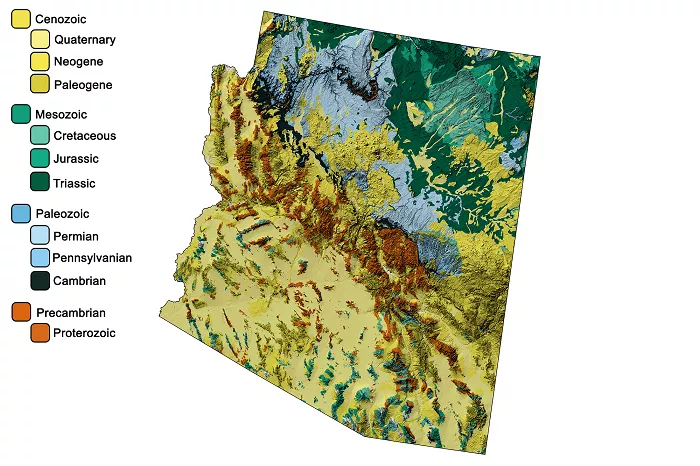Arizona is home to a vast array of mountain ranges, each offering unique geological features, ecosystems, and recreational opportunities. From the towering San Francisco Peaks in the north to the rugged Chiricahua Mountains in the southeast, the state’s topography is as varied as it is breathtaking. Understanding the distribution and characteristics of these mountains is essential for geographers, hikers, and nature enthusiasts alike.
Major Mountain Ranges in Arizona
Arizona boasts over 200 named mountain ranges, each contributing to the state’s rich geological tapestry. Some of the most prominent include:
- San Francisco Peaks: Located in Coconino County, these peaks are remnants of an eroded stratovolcano and include Humphreys Peak, the highest point in Arizona at 12,633 feet.
- White Mountains: Situated in the eastern part of the state, these mountains are known for their dense forests and are part of the larger Colorado Plateau.
- Chiricahua Mountains: Found in Cochise County, these “sky islands” are renowned for their unique rock formations and biodiversity.
- Mazatzal Mountains: Spanning Gila and Yavapai counties, this range is characterized by rugged terrain and is a popular destination for hikers.
- Santa Catalina Mountains: North of Tucson in Pima County, these mountains are a prominent feature of the Sonoran Desert landscape.
Geographical Distribution by County
Arizona’s mountain ranges are distributed across its counties, each offering distinct landscapes:
- Coconino County: Home to the San Francisco Peaks and part of the Kaibab Plateau.
- Apache County: Features the White Mountains and Chuska Mountains.
- Cochise County: Contains the Chiricahua, Dragoon, and Mule Mountains.
- Gila County: Hosts the Sierra Ancha and Pinal Mountains.
- Pima County: Includes the Santa Catalina, Rincon, and Tucson Mountains.
Ecological Significance
Arizona’s mountains play a crucial role in supporting diverse ecosystems:
- Sky Islands: Isolated mountain ranges like the Chiricahua Mountains create unique habitats for various plant and animal species.
- Watersheds: Mountains act as watersheds, capturing precipitation that feeds into rivers and aquifers.
- Biodiversity: Elevation gradients support a range of biomes, from desert scrub to alpine forests.
Recreational Opportunities
The state’s mountains offer numerous recreational activities:
- Hiking and Climbing: Trails in the Superstition and Mazatzal Mountains attract outdoor enthusiasts.
- Wildlife Viewing: Areas like the Santa Rita Mountains are ideal for observing diverse fauna.
- Camping: Many mountain ranges provide campgrounds and backcountry camping options.
Conclusion
Arizona’s mountains are integral to its identity, offering ecological diversity, recreational opportunities, and cultural significance. Whether you’re a geographer, hiker, or nature lover, exploring these ranges provides insight into the state’s rich natural heritage.

